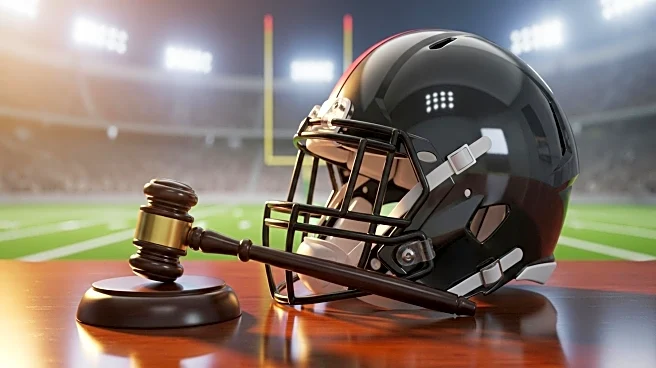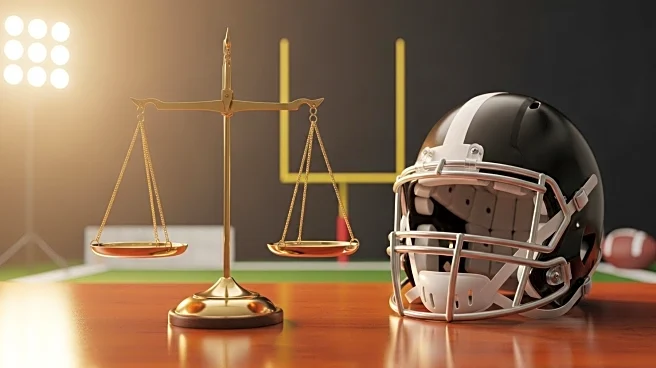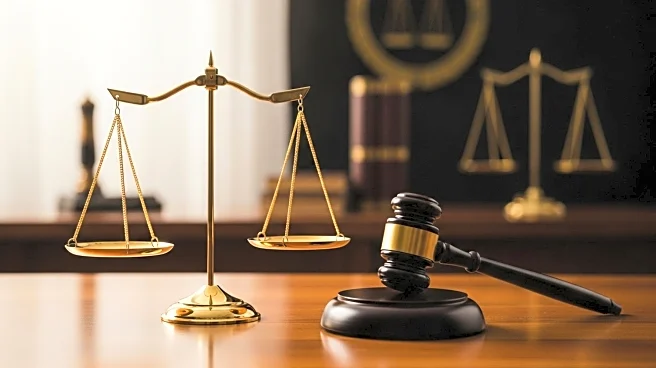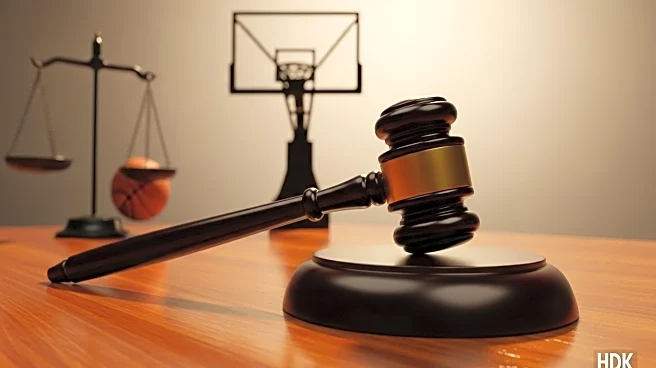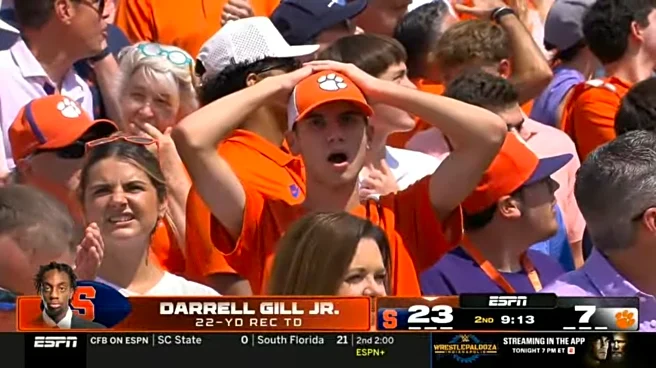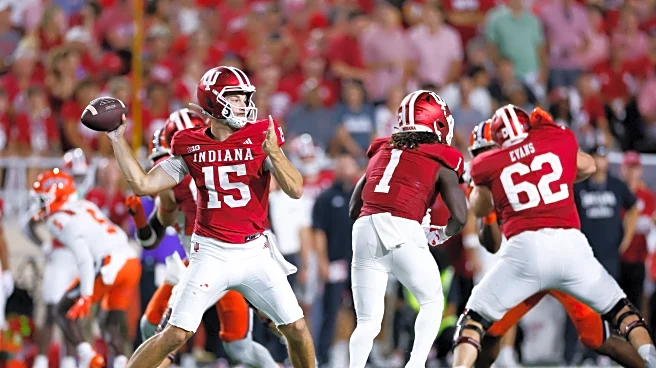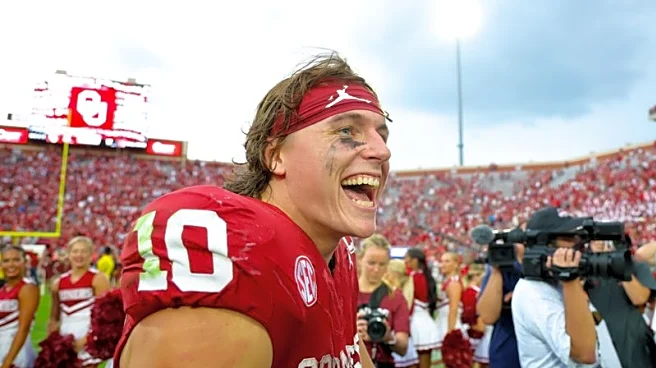What's Happening?
Indiana safety Louis Moore has successfully challenged the NCAA's five-year eligibility rule in court, allowing him to play for the remainder of the 2025 season. Moore, the leading tackler for the Hoosiers, filed a lawsuit in August arguing that his three years at Navarro Junior College should not count towards his NCAA eligibility. A Texas judge granted an injunction, enabling Moore to participate in games without restrictions until January 29, 2026. This decision follows a similar court victory by Vanderbilt quarterback Diego Pavia, setting a precedent for Moore's case. Moore has been a key player for Indiana, contributing significantly to their defense with 23 tackles and two interceptions in the first four games of the season.
Why It's Important?
The court ruling in favor of Louis Moore is significant for Indiana's football team as they aim to return to the College Football Playoff. Moore's presence strengthens the Hoosiers' defense, providing a boost to their secondary. His eligibility ensures that Indiana can rely on his experience and skills throughout the season, potentially improving their chances against formidable opponents like Iowa and Oregon. The case also highlights ongoing debates about NCAA eligibility rules, particularly concerning athletes who transfer from junior colleges. This decision may influence future eligibility disputes and impact how the NCAA addresses similar cases.
What's Next?
With Moore cleared to play, Indiana will focus on upcoming games, including a challenging match against No. 6 Oregon. The team will likely strategize to maximize Moore's defensive capabilities. Meanwhile, the NCAA may face increased scrutiny and pressure to reconsider its eligibility rules, especially for athletes with junior college backgrounds. Other players in similar situations might be encouraged to pursue legal action, potentially leading to broader changes in NCAA policies.
Beyond the Headlines
The ruling in Moore's favor underscores the complexities of NCAA eligibility rules and the legal avenues available to athletes. It raises questions about fairness and consistency in how eligibility is determined, particularly for those with non-traditional paths. The case may prompt discussions about the balance between maintaining competitive integrity and accommodating athletes' unique circumstances. Additionally, it could influence how colleges recruit and support players from junior colleges, recognizing the potential for legal challenges to eligibility decisions.


